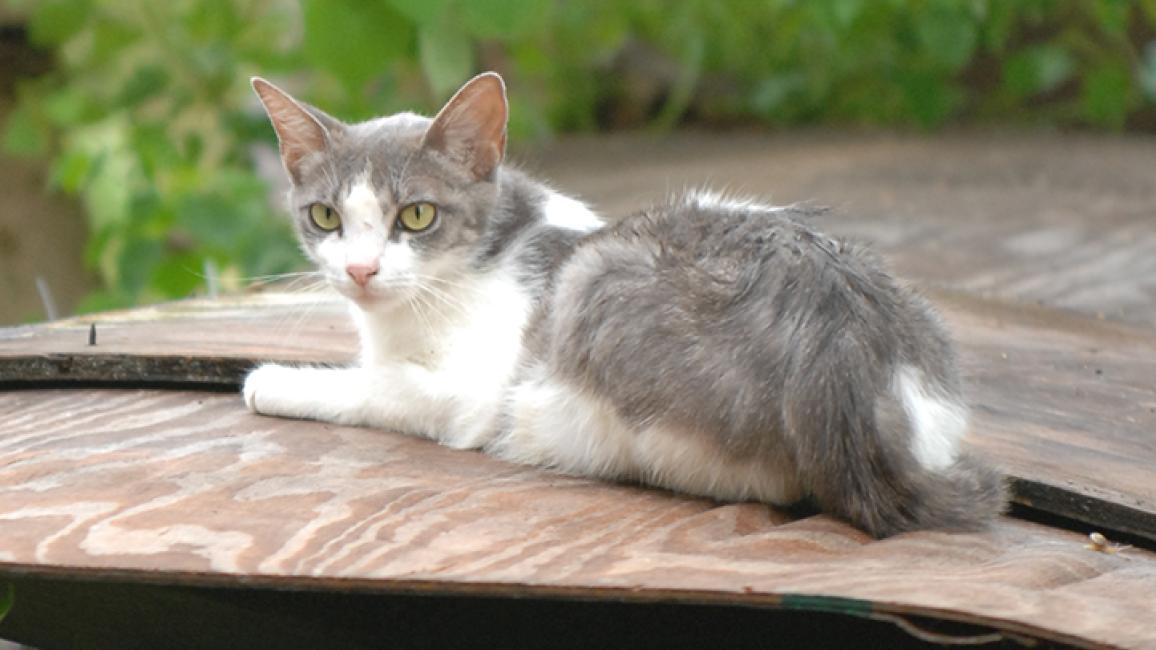Finding feral cats in the projects

Gin Taylor walked quickly into the East Point, Georgia, neighborhood – one of many that is often referred to as "the projects." She had just left work at No More Homeless Pets Atlanta, where she managed Catlanta, a feral and stray cat assistance program. Gin was ready to go home; it was late and she was hungry. But, duty called; she had been contacted by a woman who needed help catching some feral cats and, being handicapped, the woman couldn’t do it herself.
Trapping feral cats in the projects
The neighborhood was overrun with cats and a lot of people were cruel to them; they often poisoned the cats, shot them or put them in trash bins for the garbage man to collect.
Gin does a lot of her outreach here and always stresses to residents that the cats are a source of rodent control, which is the only thing that keeps a lot of the cats alive. On the other hand, Gin says, when the same people hear about how much others have donated – time, effort, funding – to help the cats, they are less likely to hurt them. In her experience, people, no matter how hardened, usually don’t like the idea of undermining charitable efforts.
Once she found her target area that day, Gin set out some traps and hunkered down out of sight to wait.
She was ready for the cats – what she wasn’t expecting was human company. A group of young kids gathered around the traps; they were rambunctious, loud and moved noisily about. They certainly weren’t helping Gin any, and she started getting annoyed. She thought they were up to no good, and might want to hurt the cats. But when she approached them, she realized they weren’t intending any harm. In fact, they even asked if she was the "lady who catches cats."
"They didn’t want to hurt the cats; they just wanted to grab them out of the traps to have a ‘pet’ to take home," said Gin. "Honestly, I was surprised they didn’t already have cats!"
Educating neighborhood kids about TNR
Gin started explaining to the kids that there was a trick to catching cats. Did they want to learn? The group seemed eager, but only if they could take the cats home. Of course the answer was no, but to keep their interest, Gin merely said, "We’ll see."
Gin told the kids about the trap/neuter/return (TNR) process and gave each one a task: One kid to line the traps with newspaper and set it; one to put the bait in; one to cover the trap; and one to place the trap.
"After everything was set, we walked across the street to wait. We sat down, and one boy innocently asked, ‘Um, why don’t you want them to have more kittens?’ Then we had an hour-long Q&A about spay/neuter and the responsibility of pet ownership," Gin said.
Gin always tries to educate people about feral cats. She opens up a dialog and takes the conversation as far as they are willing to go. Gin used to teach in a college classroom; now her focus has changed to humane education and outreach – like talking to kids on neighborhood streets.
"They were a great audience, and as I was leaving with the many cats we were able to trap, one of them saluted me and told me it was nice working with me. It was so sweet," she said. "I went home and scolded myself for being so impatient at first. This was definitely worth coming home late."
Photo by Best Friends staff